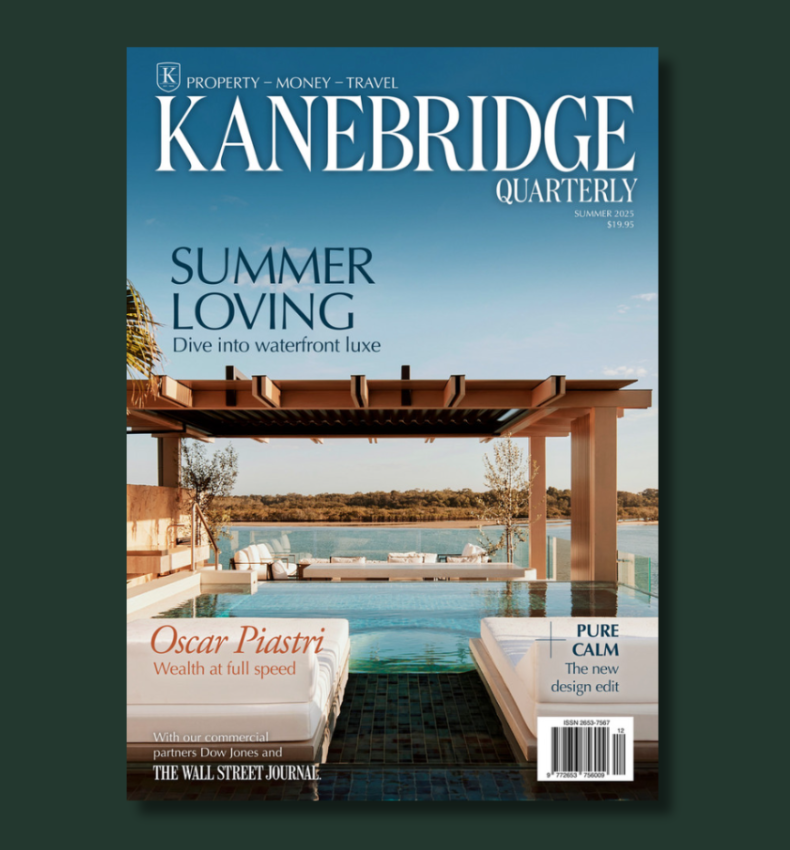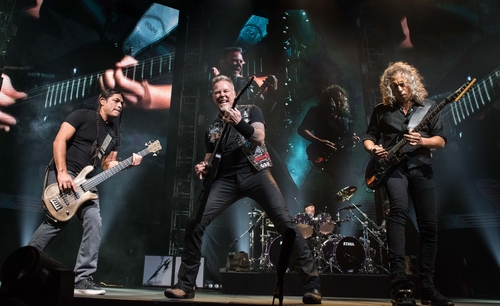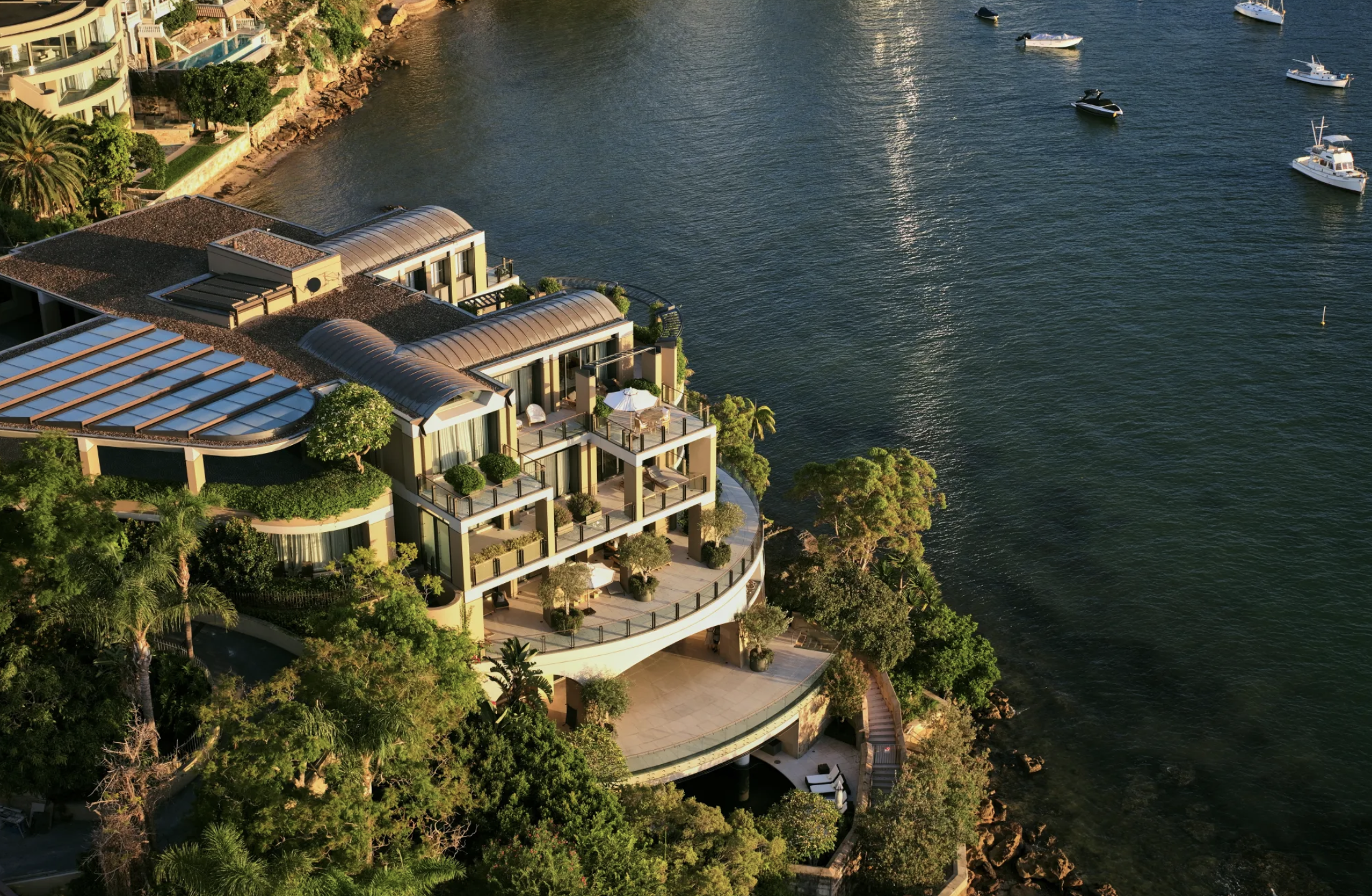Metallica’s European Tour Showcases Renewable-Energy Big Rigs—And Their Limits
The heavy-metal band is using natural gas and vegetable oil to power its 7,200-mile journey, but filling trucks up on sustainable fuels still has a long way to go
Metallica, the band that blazed a trail for thrash metal with rugged guitar riffs and relentless drumbeats, is trying to do something similar for trucks powered by sustainable fuels.
The group, a rock music mainstay since their 1986 hit album “Master of Puppets,” is looking to burnish its bona fides on social issues by using rigs powered by fuels including biomethane and vegetable oil on its European tour this summer.
Working with European truck maker Iveco, the authors of songs including “Battery” and “Fuel” (sample lyric: “Fuel is pumping engines / Burning hard, loose and clean / And I burn, churning my direction / Quench my thirst with gasoline.”) aim to show that sustainable transportation in heavy-duty trucking is possible on European highways dotted with alternative-fuelling stations.
But the trucks’ limitations and the workarounds the band’s logistics providers are undertaking on the meticulously-planned 7,200-mile journey winding through the continent from Sweden to Spain also illustrate how far trucking is from using cleaner fuels in regular operations.
“You have limited options because of the lack of the infrastructure,” said Natasha Highcroft, a director of Suffolk, U.K.-based Transam Trucking, which provides logistics for Metallica and other bands. “We use alternative fuels as and when we can, as much as possible, but until the infrastructure is there it’s very difficult.”
The trucks run on natural gas, vegetable oil, electricity and hydrogen fuel cells, and will be hauling giant video screens, lighting and instruments across nine countries.
The workhorses of Metallica’s tour will be 10 heavy-duty trucks powered by renewable natural gas—such as methane from landfills—and four heavy-duty trucks running on biodiesel or hydrogenated vegetable oil. The trucks, dramatically decked out in Metallica’s fierce logo, can travel about 1,000 miles between refuelling.
Both fuels provide a significant reduction in emissions compared with regular diesel, although emissions experts say they aren’t nearly as clean as battery-electric or hydrogen fuel cell technologies.
The tour was due to kick off this week in Munich, Germany, and over the next two months will cover the continent from Italy and Spain in southern Europe to Denmark and Norway. The longest journey between shows, from Warsaw to Madrid, covers almost 1,800 miles.
Iveco, which is providing the eco-friendly trucks for Metallica’s tour, makes both battery-electric and hydrogen fuel cell big-rig engines, the types that governments in Europe and the U.S. are trying to press on truckers as soon as possible. But because of the lack of charging and fuelling stations on the long legs between gigs, the battery-electric and hydrogen trucks will be mostly for promotional use at concerts, said Gerrit Marx , chief executive of the Italian truck maker.
Marx said Iveco wants to highlight that renewable natural gas and hydrogenated vegetable oil are “more available and ready” than batteries and hydrogen while also being “way better than fossil diesel.”
Europe has hundreds of liquefied natural gas and hydrogenated vegetable oil, or HVO, refuelling stations. A representative for British energy major Shell , which is working with Iveco on the tour, said Metallica’s low-carbon journey wouldn’t have been possible even a couple of years ago.
Shell says its customers can access HVO in five European countries and renewable natural gas in Germany and in the Netherlands. That means that when low-carbon options aren’t available, the Iveco trucks will be fuelled with regular LNG and the HVO trucks will be fuelled with regular diesel.
A Shell representative said the Metallica tour will buy carbon credits to offset “unavoidable emissions“ generated by the low-emission trucks.
U.S. companies are also using renewable natural gas and biodiesel to reduce carbon emissions. But trucking specialists say the fuels aren’t available in sufficient quantities to power the world’s fleets, which is why regulators are pushing battery-electric and hydrogen fuel cell vehicles.
Trucking executives say the costs of operating those technologies are double or triple those of diesel and that they aren’t workable in a highly-competitive, low-margin industry like trucking.
Lars Stenqvist , chief technology officer at truck maker Volvo Group , said it is important that high-profile performers like Metallica amplify the capabilities of sustainable fuels.
Truckers will only adopt the technology when customers demand it, he said, so “This is music to my ears.”
 Copyright 2020, Dow Jones & Company, Inc. All Rights Reserved Worldwide. LEARN MORE
Copyright 2020, Dow Jones & Company, Inc. All Rights Reserved Worldwide. LEARN MORE
From gorilla encounters in Uganda to a reimagined Okavango retreat, Abercrombie & Kent elevates its African journeys with two spectacular lodge transformations.
The PG rating has become the king of the box office. The entertainment business now relies on kids dragging their parents to theatres.
Selloff in bitcoin and other digital tokens hits crypto-treasury companies.
The hottest crypto trade has turned cold. Some investors are saying “told you so,” while others are doubling down.
It was the move to make for much of the year: Sell shares or borrow money, then plough the cash into bitcoin, ether and other cryptocurrencies. Investors bid up shares of these “crypto-treasury” companies, seeing them as a way to turbocharge wagers on the volatile crypto market.
Michael Saylor pioneered the move in 2020 when he transformed a tiny software company, then called MicroStrategy , into a bitcoin whale now known as Strategy. But with bitcoin and ether prices now tumbling, so are shares in Strategy and its copycats. Strategy was worth around $128 billion at its peak in July; it is now worth about $70 billion.
The selloff is hitting big-name investors, including Peter Thiel, the famed venture capitalist who has backed multiple crypto-treasury companies, as well as individuals who followed evangelists into these stocks.
Saylor, for his part, has remained characteristically bullish, taking to social media to declare that bitcoin is on sale. Sceptics have been anticipating the pullback, given that crypto treasuries often trade at a premium to the underlying value of the tokens they hold.
“The whole concept makes no sense to me. You are just paying $2 for a one-dollar bill,” said Brent Donnelly, president of Spectra Markets. “Eventually those premiums will compress.”
When they first appeared, crypto-treasury companies also gave institutional investors who previously couldn’t easily access crypto a way to invest. Crypto exchange-traded funds that became available over the past two years now offer the same solution.
BitMine Immersion Technologies , a big ether-treasury company backed by Thiel and run by veteran Wall Street strategist Tom Lee , is down more than 30% over the past month.
ETHZilla , which transformed itself from a biotech company to an ether treasury and counts Thiel as an investor, is down 23% in a month.
Crypto prices rallied for much of the year, driven by the crypto-friendly Trump administration. The frenzy around crypto treasuries further boosted token prices. But the bullish run abruptly ended on Oct. 10, when President Trump’s surprise tariff announcement against China triggered a selloff.
A record-long government shutdown and uncertainty surrounding Federal Reserve monetary policy also have weighed on prices.
Bitcoin prices have fallen 15% in the past month. Strategy is off 26% over that same period, while Matthew Tuttle’s related ETF—MSTU—which aims for a return that is twice that of Strategy, has fallen 50%.
“Digital asset treasury companies are basically leveraged crypto assets, so when crypto falls, they will fall more,” Tuttle said. “Bitcoin has shown that it’s not going anywhere and that you get rewarded for buying the dips.”
At least one big-name investor is adjusting his portfolio after the tumble of these shares. Jim Chanos , who closed his hedge funds in 2023 but still trades his own money and advises clients, had been shorting Strategy and buying bitcoin, arguing that it made little sense for investors to pay up for Saylor’s company when they can buy bitcoin on their own. On Friday, he told clients it was time to unwind that trade.
Crypto-treasury stocks remain overpriced, he said in an interview on Sunday, partly because their shares retain a higher value than the crypto these companies hold, but the levels are no longer exorbitant. “The thesis has largely played out,” he wrote to clients.
Many of the companies that raised cash to buy cryptocurrencies are unlikely to face short-term crises as long as their crypto holdings retain value. Some have raised so much money that they are still sitting on a lot of cash they can use to buy crypto at lower prices or even acquire rivals.
But companies facing losses will find it challenging to sell new shares to buy more cryptocurrencies, analysts say, potentially putting pressure on crypto prices while raising questions about the business models of these companies.
“A lot of them are stuck,” said Matt Cole, the chief executive officer of Strive, a bitcoin-treasury company. Strive raised money earlier this year to buy bitcoin at an average price more than 10% above its current level.
Strive’s shares have tumbled 28% in the past month. He said Strive is well-positioned to “ride out the volatility” because it recently raised money with preferred shares instead of debt.
Cole Grinde, a 29-year-old investor in Seattle, purchased about $100,000 worth of BitMine at about $45 a share when it started stockpiling ether earlier this year. He has lost about $10,000 on the investment so far.
Nonetheless, Grinde, a beverage-industry salesman, says he’s increasing his stake. He sells BitMine options to help offset losses. He attributes his conviction in the company to the growing popularity of the Ethereum blockchain—the network that issues the ether token—and Lee’s influence.
“I think his network and his pizzazz have helped the stock skyrocket since he took over,” he said of Lee, who spent 15 years at JPMorgan Chase, is a managing partner at Fundstrat Global Advisors and a frequent business-television commentator.
Records keep falling in 2025 as harbourfront, beachfront and blue-chip estates crowd the top of the market.
With two waterfronts, bushland surrounds and a $35 million price tag, this Belongil Beach retreat could become Byron’s most expensive home ever.
























